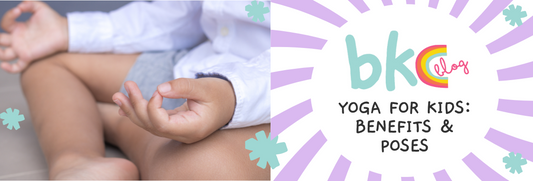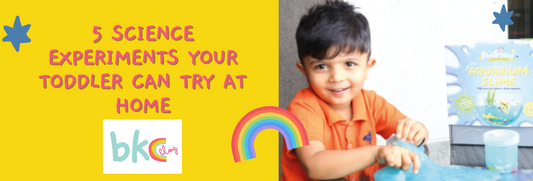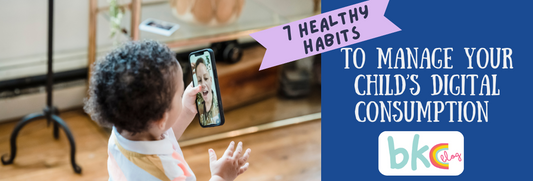Reading to your child from a young age helps develop the social-emotional part of their brain. While the benefits of reading extend to childhood and later parts of life, you get the biggest benefit: if your child loves to read and readily settles down with a good book, you have earned yourself some quality time with your little one.

Were you an avid reader growing up? Then you would probably be excited for your little one to finally start picking up those books that kept you hooked to Narnia, Hogwarts, the Hundred Acre Wood, and much more. But now you’re perplexed by your child’s disinterest towards reading, particularly towards books.
Well, we are here to tell you that you needn’t worry.
Reading is a habit that develops with time. The wonderful thing about books is that you can initiate your child into the world of reading from a very young age. And it’s the best thing you could do for them.
How Is Reading Beneficial?

Language development in children is often attributed to reading (or sharing a book) and conversing with caregivers. Reading to your mini-human before they can even begin to talk can help with their brain development. Experts say that it stimulates those parts of the brain that help build language and socio-emotional skills.
Linguistically, reading regularly to young children helps introduce new sounds, expand vocabulary, and understand sentence structure. A 2019 study – published in the Journal of Developmental & Behavioral Pediatrics – found that children who were read to every day for the first five years of their lives were exposed to a cumulative 1.4 million more words than kids who were never read to.
Additionally, with reading, young children begin to have a visual understanding of important concepts such as colours, numbers, and shapes.
While it sets the stage for early learning and skill development in your precious ones, reading brings out the best in parent-child relationships. Children love it when they have the undivided attention of their caregivers.
Imagine your child snuggling up to you while you’re reading animatedly: isn’t that a memory you want to cherish? For them, it’s not about the content being read, but about the time spent with them. The whole process is intimate and stimulates the social-emotional side of your child’s brain, which helps develop emotional security for later life.
And not just that, sharing a book with your young one is the best way for you to be present in the moment. It is a creative outlet for adults from their time-challenged schedule.
If you are the proud parent of a baby, you’ll probably be wondering whether you’re jumping the gun with reading. You’re not. Studies show that you can start reading to your child as early as five months old.
And for parents of toddlers, if you haven’t started reading already, there is no need to worry. You can begin today.
Where to Begin
Every reading session provides your child with new learning. When you read to your child, you are sharing a book with them; they listen to your rhyming and intonation, look at the bright illustrations with awe, and ultimately have a good time.
Before we spill the beans on reading basics, one thing to remember: you shouldn’t teach a child below three years of age to read. A child begins recognising signs and symbols and understanding their meanings only at three years. Teaching them to read before they reach this stage will suck the fun right out of the habit you have patiently built.
Here is the age-wise low-down on how you can start reading to your kid:
0 to 6 Months
Since babies don’t understand most things that are going on around them, it shouldn’t come as a surprise if your little one doesn’t pay attention to books right away. But babies love calming routines, especially the ones that may seem boring to you. This is why you should incorporate reading into your little one's bedtime routine.
When a baby is born, their vision is still developing. Hence, books with high-contrast pictures and little or no text work best. We love Jane Foster's Black and White and Newborn High Contrast Flash Cards.

As they grow older, babies explore by grabbing and mouthing the things they find intriguing. This is why books like Usborne’s That’s Not My Mermaid work perfectly with babies this age.
7 to 12 Months
At this stage, babies begin to understand certain words – mommy, daddy, milk, and food – that are commonly used in conversations around them. They even have a way of communicating the same with you, often showing their excitement by moving their hands or legs wildly. Short and simple board books with colourful illustrations or images – such as Tickle Time! A Boynton on Board Board Book and Peek-a-boo You! – are guaranteed to elicit such reactions from your baby.

Babies continue to explore books by mouthing and touching them. So if you have already introduced textured books, you should continue reading them to the baby. Don't Tickle the T. Rex! is our favourite book in this category as the touchy-feely patches have sounds embedded in them.
13 to 18 Months
It is at this stage that your little one becomes more receptive towards reading. If you have been reading enough, it is highly likely they will have a favourite book by now. Let the routine no longer be a one-person affair; throw simple and fun questions in your child’s way. To start off, you could bring out lift-the-flap books like The Pop-Up Dear Zoo and The Snail and the Whale: A Push, Pull and Slide Book.
You can now safely introduce books with sentences, provided there are enough brightly coloured illustrations to complement. If you’re reading animal books such as The Giraffe Who Came to Play, you could ask your child to try and make animal sounds and then make the sounds yourself. You’ll get yourself a giggle festival.
19 to 24 Months
It can be frustrating if your child doesn’t sit still during your reading session. That’s okay. You needn’t stop. A good story book could settle your child.
You could ask them to participate. For instance, if you’re reading them a book about a mouse, you could ask them to show how it eats food or runs around. Books like The Very Hungry Caterpillar, Polar Bear, Polar Bear, What Do You Hear?, and From Head to Toe by Eric Carle are popular with this age group.

At this stage, don’t be frustrated if your child keeps asking to repeat the same book over and over and over. Some kids even memorise their favourite books to a T. This is probably because they find the story calming. And if you’re reading before bedtime, that is a good thing.
2 Years and Above
Your child is at that stage where they are curious about the world around them. They ask a lot of questions that may sometimes seem redundant to you. Their pretend play sessions are more about what it feels like to be in another person’s shoes. For instance, pretending to be Mommy.
This is when you can introduce non-fiction books with colourful illustrations. Here are our picks: the Little Explorers series, Usborne's Look Inside series, and Hello, Mrs. Bear!.
Kids this age love good humour and a good story. Try reading books such as The Tiger Who Came to Tea, The Day the Crayons Came Home, Grrrrr, and Up and Down.
If you want detailed insights on how to read to your child, what kind of books your tween would love to read, or how to build a family library, we have a book for that too. Pamela Paul and Maria Russo’s How to Raise a Reader is an excellent guide for Mommas and Dadas looking for a guide to help their children fall in love with the world of letters.
There is no right or wrong way to read to your child. However, you might not get the desired reaction from your young reader on the first day of reading. But here are some things you can keep in mind to be at ease about the process:
-
You can include storytime whenever you feel fit. It need not be at bedtime.
-
Let your child pick up a book for each session.
-
Don’t be discouraged if you can’t get through the whole book at a sitting. Keep reading every day.
-
If your child cries during storytime, chances are that they are tired. Don’t force, you could read later when your baby is feeling fresh.
And the most important tip above everything else: don’t stress about the do’s and don'ts, be present and have fun with your little one.





